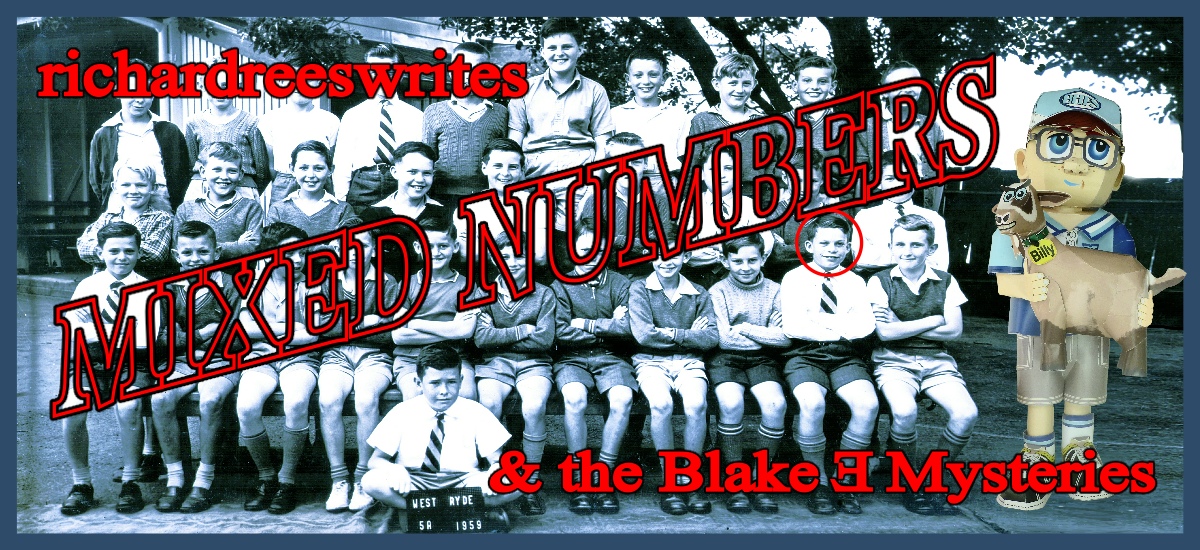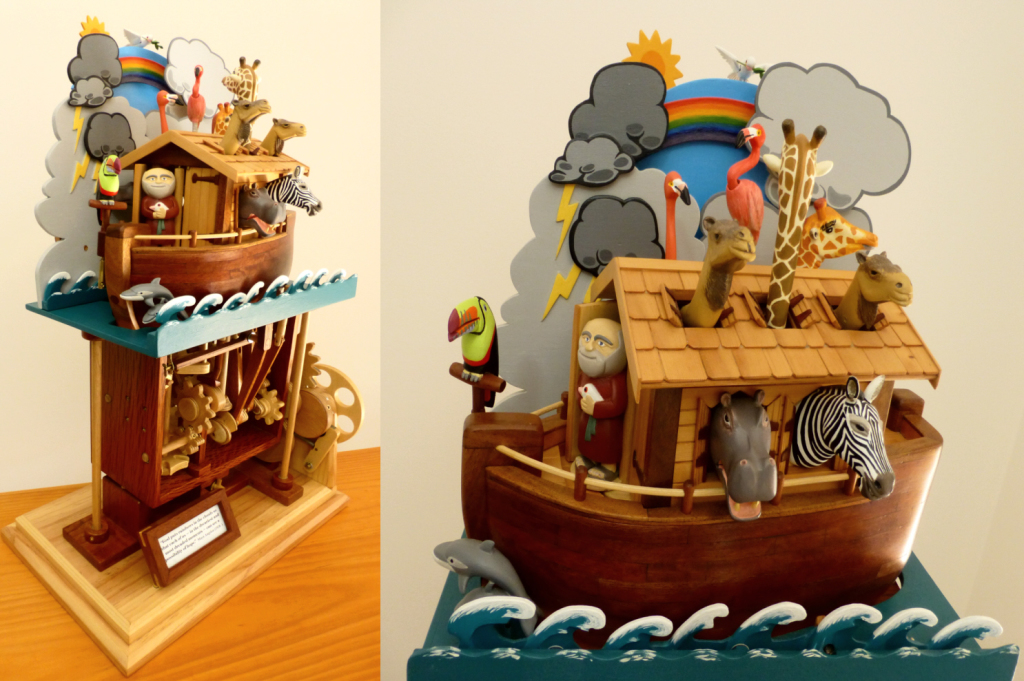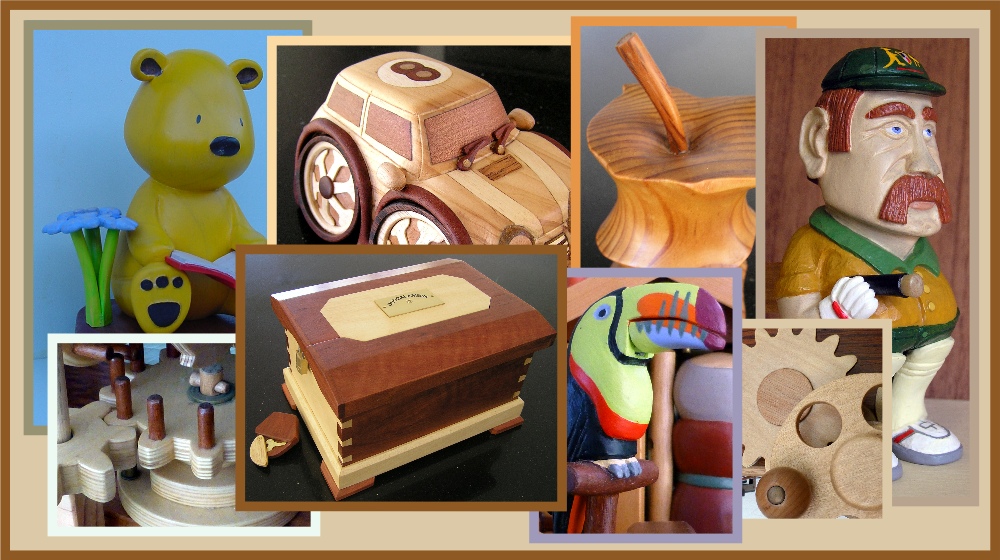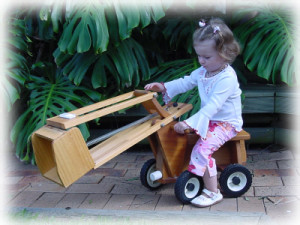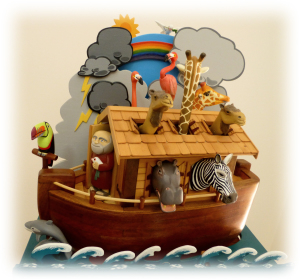Mixed Woodcraft Articles – Wood in motion

Wood in Motion As published in the Australian Wood Review, Issue #81.
Richard Rees’ fascination with automata sparked a two and a half year journey. (Editor’s Comment)
Welcome to my world of automata. Three years ago I stumbled upon these intriguing marvels. My dictionary defined an automaton as a mechanical device operating under its own hidden power—a modest example is a cuckoo clock, however, complex automata have entertained for eons.
My resolve to design and create an original automaton began a journey in cyber-space to study their history and characteristics. As a woodcarver, my vision was to build an Ark, with a backdrop of storms and rainbow. The boat, captained by a balding Noah, would house colourful critters which would spring into action when a single knob is turned.
 Initial planning was in Google SketchUp, followed by internet research on suitable mechanisms to activate the animals. Software obtained from woodgears.ca proved invaluable when constructing the machine cogs.
Initial planning was in Google SketchUp, followed by internet research on suitable mechanisms to activate the animals. Software obtained from woodgears.ca proved invaluable when constructing the machine cogs.
Key concepts had to be redesigned, components modified, materials sourced and construction techniques trialled. There was a never-ending cycle of fail-success before my dream was realised. The finished zebra, for example, whose head measures only 45mm, contains forty parts from its crankshaft to turning ears and opening mouth.
As I laboured with miscalculations, failed mechanisms and the inevitable knife and gouge accidents, I wondered how many mistakes the masters of this art had made. History recounts that, following the invention of coiled steel springs, the 18th and 19th century produced artists with renewed interest in automata. The intricate devices created during this era are keenly sought by collectors. In 2011 Christies of London auctioned a pair of ornately decorated pistols, dated 1820, by Freres Rochat, featuring birds that appear from the barrels and flutter and chirp. The pistols fetched a feather under US$6,000,000.
Australia boasts the largest mechanically animated clock in the world. The Great Australian Clock, situated in Sydney’s Queen Victoria Building, is ten metres tall and weighs four tonnes. Chris Cook took four years to build it at a cost of $1.5 million.
Today, a search of the 3w’s will uncover a plethora of automata ranging from one-offs, fashioned by maestros, to mesmerising miniatures. One comprehensive location is the Cabaret Mechanical Theatre. Their website (cabaret.co.uk) provides videos, information on artists and exhibitions, items to purchase, classroom resources and even DIY kits. For those desirous of spending winter evenings or lazy summer days with, scissors, glue, art-knife and Band-Aids, then visit cool4cats.biz. Tim’s contraptions vary from talking dogs to an artist, accompanied by a reclining model, who completes a pencil drawing of his subject on a post-it note.
But returning to my project, after two-and-a-half years of constant endeavour my automaton came to fruition. Huon Pine, Blackwood, Birch ply and Red Mahogany contrast the coloured hand-crafted figures. A total of 1200 pieces, not counting scores of throw-away parts, were required in the construction. When the handle is rotated, over sixty parts perform their predetermined actions. Noah enters and exits his cabin as the doors swing open and then close. Each animal moves; the clouds separate; the dove flaps its wings while the sun rises over the rainbow—all this as the ark lurches on rolling waves. A Google search for “Noah’s Ark Automata” should find my video on “YouTube”.
My world of automata is not without contention—already, family arguments abound as to Noah’s future once I have “shuffled off this mortal coil”.
Text and Photographs by Richard Rees. (Of interest is the fact that Issue#81 also contained an article by regular magazine contributor Neil Scobie. Neil and I taught at Hay some forty years ago and now live ten kilometres apart.)
